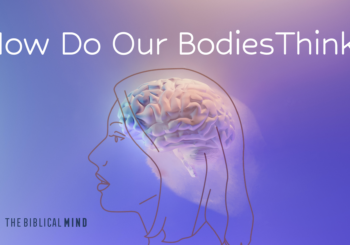A Wrinkle in Time? Mental Time Travel and Memory in the Bible
Remembering Satan—the title caught my eye and I could not put the book down.1Lawrence Wright, Remembering Satan: A Tragic Case of Recovered Memory (New York: Alfred A. Knopf, 1994). After finishing it, I sat there trying to grasp what I had just read. The book chronicles the bizarre events in the town of Olympia, Washington, in the 1980s. There, an upstanding member of the community—a sheriff’s deputy and devout Christian—confessed to a series of horrendous crimes, ranging from the rape of his own children to involvement in the slaughter of infants during satanic rituals. His family fell apart and he was sent to prison. The only problem? There was no evidence he did any of it, and, in fact, every indication was that he was the victim of something we now call false memory: memories our brains mistake to be real but which are in fact fabricated. Little did I know then that this book would provide a key to unlocking my own research into memory in the Bible.
Enjoying this article? Read more from The Biblical Mind.
Memory in the Bible: Deuteronomy
At that time, I was researching the role of memory in Deuteronomy. Of all the biblical books, Deuteronomy stands alone in its treatment of memory. Others might emphasize memory, but none does what Deuteronomy does, commanding memory and placing it at the center of community life: e.g., “Remember that you were a slave in the land of Egypt and the Lord your God brought you out of there” (Deut 5:15). The emphasis makes sense, for in Deuteronomy the people stand on the threshold of monumental change: they have been delivered out of Egypt and given a new way of life, but now, as they stand on the border of the Promised Land, they learn their great leader, Moses, is about to die. So the concern is: How will the people remain faithful to the covenant without Moses? For Deuteronomy, the answer is memory.
But there are other things that do not make sense, and one that is especially glaring. Deuteronomy makes clear at the outset that the people who stand before Moses are not the exodus generation, which is dead and gone (Deut 2:14–16). The generation standing here is a new generation with a new opportunity—the Moab generation. Yet having made this clear, Deuteronomy then proceeds to speak to the new generation as if they are the exodus generation. The most striking example is when the people are repeatedly told to recall what “you saw with your own eyes” during the exodus (e.g., Deut 4:3). Not only this, but Deuteronomy follows the commands with highly visual descriptions of the events. Such robust descriptions are curious, for biblical narrative is radically sparse to begin with and Deuteronomy is deeply aniconic (“against images”) to boot. If we were expecting to find visual descriptions anywhere in the Bible, it would not be in Deuteronomy!
How should we understand these features? Traditionally, interpreters have seen them as part of Deuteronomy’s sermonic language: Moses, like any good preacher, is using
rhetorical phrases . . . to implant in his listeners the feeling that they themselves have experienced the awe-inspiring events of the Exodus; and he repeats these phrases again and again as if to hypnotize his audience.2Moshe Weinfeld, Deuteronomy and the Deuteronomic School (Oxford: Oxford University Press, 1972), 173.
That is, the language helps new audiences to experience the Moab event, the swansong of Moses, which looks back to the exodus and forward to life in the Promised Land.
Developments in memory research have allowed us to understand this phenomenon even further. Speaking of Deuteronomy specifically, Jan Assmann has said:
We undoubtedly can speak here of a cultural, ritual memory technique that stands in the service of bonding memory and has the purpose of bringing to life and stabilizing a collective identity through a process of symbolic dramatization . . . here, if anywhere in world literature, we have a text whose theme is “making memory.”3Jan Assmann, Religion and Cultural Memory: Ten Studies, trans. Rodney Livingstone (Stanford: Stanford University Press, 2006), 16–17.
Deuteronomy, in other words, is not merely a sermon but a collective memory text, a text that seeks to cultivate memory in the community for generations to come. Its purpose is to bridge each new generation with the defining exodus generation, to help each new audience identify with those events and so join the ancient journey for themselves. Deuteronomy accomplishes this by implementing mechanisms of memory in the community, namely song (Deut 32), story (Deut 6), and ritual (Deut 16).
The Bible and Mental Time Travel
But what exactly is the bridge that allows new generations to travel back to the exodus generation? This is where Remembering Satan comes back into play. What we learned from that incident—and others like it—was that the brain can be tricked into thinking imagined events are real. But how? It turns out that our brains separate memories of imagined events from real events according to their level of lifelike features, with two being most important: vivid visual detail and an eyewitness perspective. In other words, imagined things are stored from an observer’s perspective but experiences are stored from a participant’s perspective. Confusion occurs, then, when an imagined event is artificially infused with lifelike features, which is what happens with false memory. Most of those cases grew out of an experimental therapy that sought to “recover” repressed memories by having people imagine and then rehearse traumatic experiences. In doing this, the therapists unwittingly cultivated the conditions for false memory to grow.
But while this mental bridge can be corrupted, as in false memory, it usually serves key roles in human life. One such role is the creation of religious identity. For religious communities, the dilemma is this: how does each new generation come to identify with the community’s key events, events long past? The answer, of course, is memory. But it must be a certain kind of memory, one that allows people to experience “mental time travel”4This, along with the technical name “chronesthesia,” was coined by Endel Tulving, “Memory and Consciousness,” Canadian Psychology 26 (1985): 1–12 and in some sense participate in those events—to “see” themselves there. As false memory taught us, this only happens when certain conditions are met, namely, when people remember things in visual detail and from an eyewitness perspective.
Through that discovery, Deuteronomy’s odd features suddenly make sense.5A.J. Culp, Memoir of Moses: The Literary Creation of Covenantal Memory in Deuteronomy (Lexington Books/Fortress Academic, New York: 2020). The book refers to the audience as the exodus generation and rehearses its events in visual detail for a particular purpose: to allow each new generation to “experience” the exodus events. Those features, in other words, facilitate mental time travel to the exodus events. Yet Deuteronomy does not want people to remain there in the past but to live in the present, and so it frames memory from the setting of Deuteronomy—from the perspective of Moab. Each new audience, then, is drawn into the Moab moment: looking back upon the exodus generation and forward into the Promised Land, standing before the Lord at a moment of decision.6J. G. Millar and J. G. McConville, Time and Place in Deuteronomy (Sheffield: Sheffield Academic Press, 1994).
It is no surprise to find the same phenomenon at the heart of the New Testament in the Lord’s Supper (Matt 26:17–30; Mark 14:12–26; Luke 22:7–39; John 13:1–17:26). There Christ takes up a central rite in Israel’s commemoration of the exodus deliverance, the Passover, and applies it to himself as the new paschal lamb. The celebration of the Lord’s Supper now becomes the central rite in the church’s commemoration of Christ.
But as we find in 1 Corinthians, the practice of remembering is not limited to the disciples but extends to each new generation of Christians, and as such shares much in common with Deuteronomy:
For I received from the Lord what I also passed on to you: The Lord Jesus, on the night he was betrayed, took bread, and when he had given thanks, he broke it and said, “This is my body, which is for you; do this in remembrance of me.” In the same way, after supper he took the cup, saying, “This cup is the new covenant in my blood; do this, whenever you drink it, in remembrance of me.” For whenever you eat this bread and drink this cup, you proclaim the Lord’s death until he comes (1 Cor 11:23–26; NIV).
Here we find the apostle Paul, like Moses, calling new generations to “remember” something they did not experience themselves. He draws them in by recounting the episode, along with the words that, originally for the disciples, now address new audiences as “you.” Yet he also situates each new audience at a point between the past and future: they are to remember what happened so that they might live rightly “until he comes” again. In celebrating the Lord’s Supper, then, Christians experience a divine wrinkle in time:7The phrase is taken from the classic work by Madeleine L’Engle, A Wrinkle in Time (New York: Farrar, Straus & Giroux, 1962). they are transported back to the Last Supper and forward to the future return of Christ, all while standing before the Lord’s table in the present.
End Notes
1. Lawrence Wright, Remembering Satan: A Tragic Case of Recovered Memory (New York: Alfred A. Knopf, 1994).
2. Moshe Weinfeld, Deuteronomy and the Deuteronomic School (Oxford: Oxford University Press, 1972), 173.
3. Jan Assmann, Religion and Cultural Memory: Ten Studies, trans. Rodney Livingstone (Stanford: Stanford University Press, 2006), 16–17.
4. This, along with the technical name “chronesthesia,” was coined by Endel Tulving, “Memory and Consciousness,” Canadian Psychology 26 (1985): 1–12
5. A.J. Culp, Memoir of Moses: The Literary Creation of Covenantal Memory in Deuteronomy (Lexington Books/Fortress Academic, New York: 2020).
6. J. G. Millar and J. G. McConville, Time and Place in Deuteronomy (Sheffield: Sheffield Academic Press, 1994).
7. The phrase is taken from the classic work by Madeleine L’Engle, A Wrinkle in Time (New York: Farrar, Straus & Giroux, 1962).
Subscribe now to receive periodic updates from the CHT.





